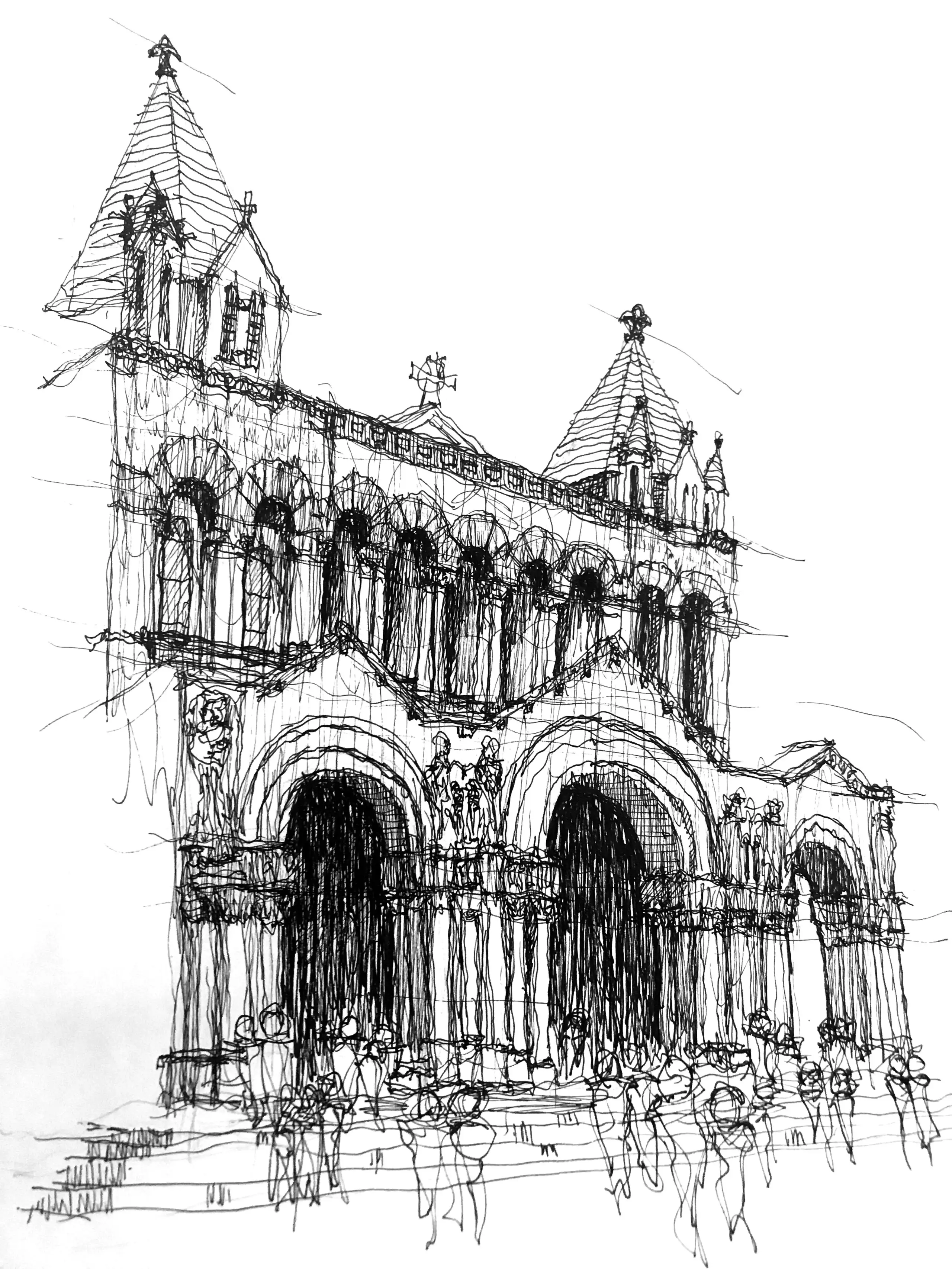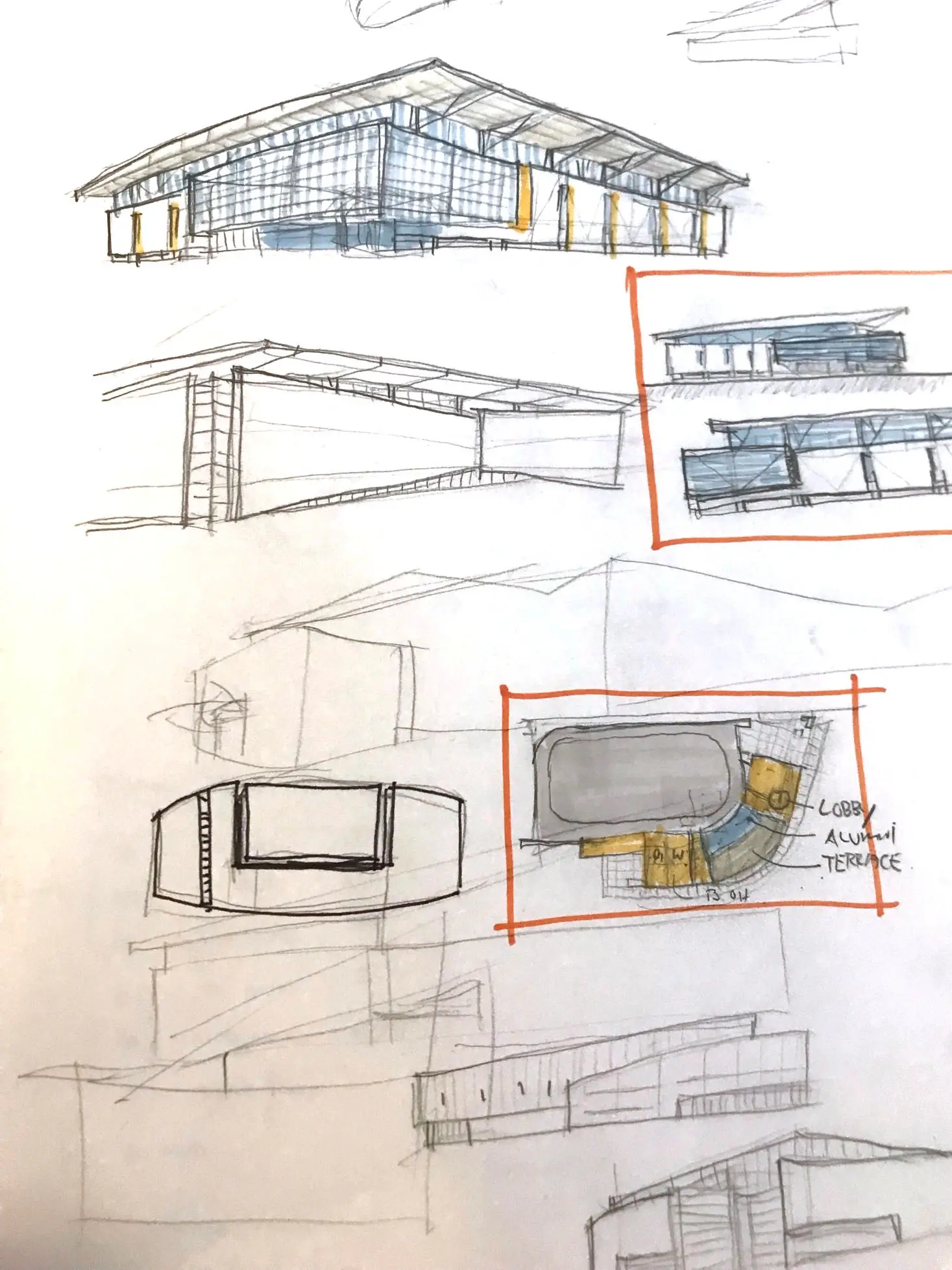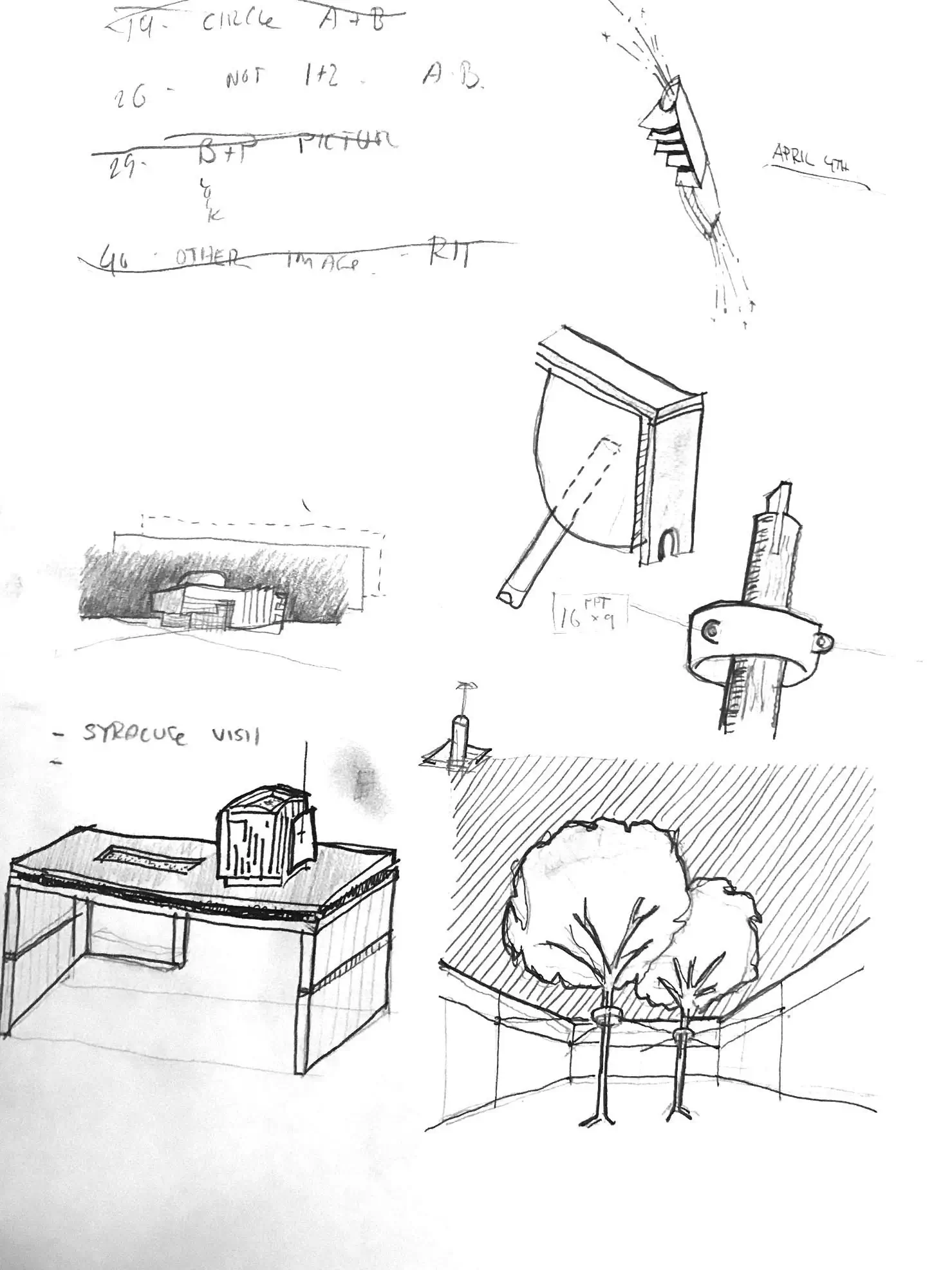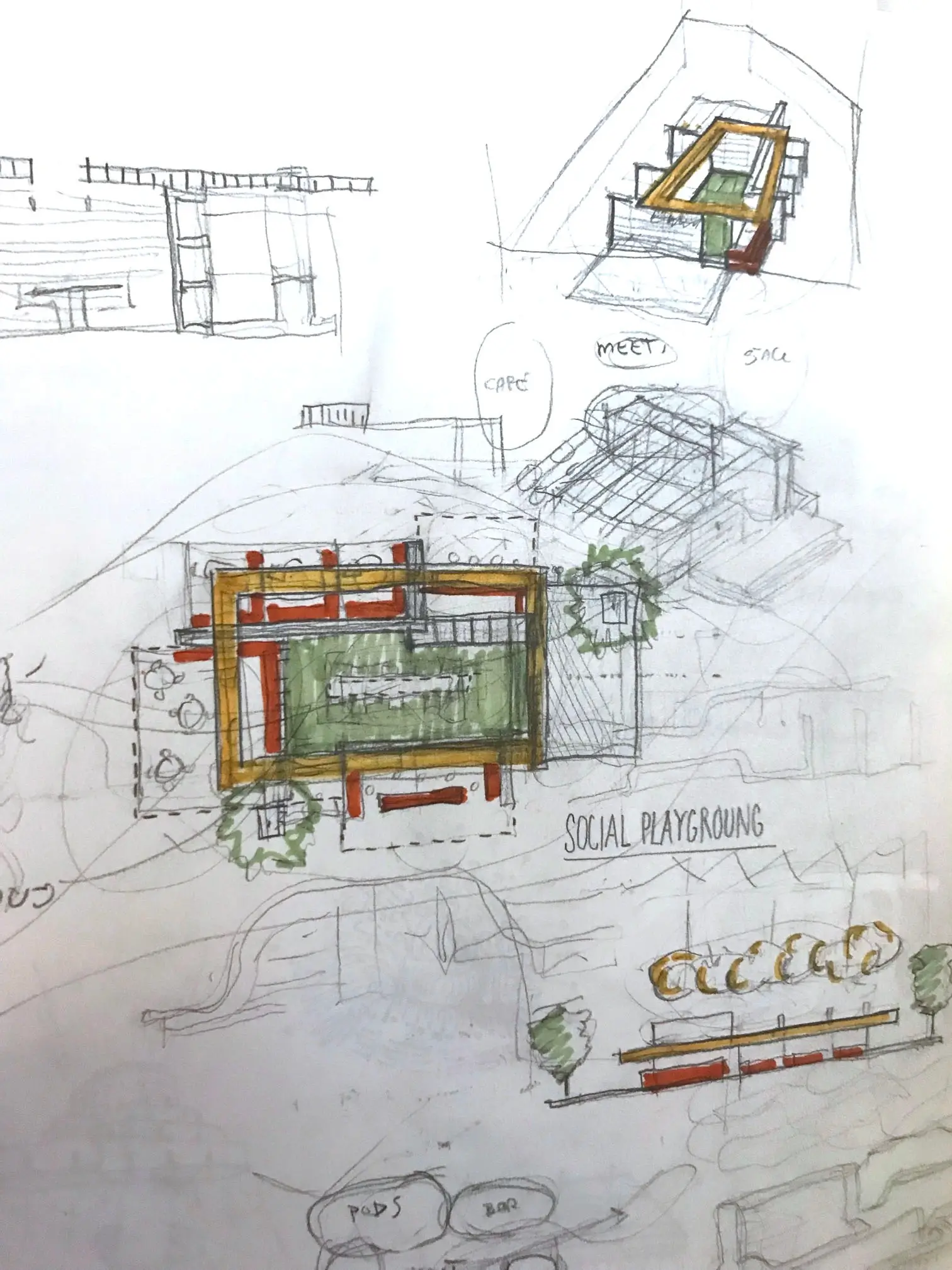The Sketchbook

The architect’s sketchbook is as much a symbol as it is an actual tool, just like the T-Square and the roll of drawings under one’s arm. While these other tools have not followed the profession into the information age, the sketchbook has persisted for many designers and this is how this particular designer learned to make it an important tool.
In design school a sketchbook was something we were expected to have, although few of us knew how we were supposed to use it, and for some of us it was a great generator of stress. We were taught that one should draw and draw some more. See something that catches your eye, pull out your sketchbook and record it. At least this is what I thought I heard. It was not until the 4th year of design school that I learned that I was doing it wrong.
As you could imagine, when one is studying abroad in Italy, one’s sketchbook becomes a vessel where memories get stored, with the thought that “someday I will flip back through this and there will be my frozen experiences of this amazing time.” On the weekends, our assignment was to travel to someplace and experience that place, while recording those experiences in our sketchbooks. I did exactly that. I searched out the perfect angle to draw Palladian Basilica in Vicenza, or the best way to capture Michelangelo’s Laurencin Library stair. I tried to capture each detail, each shadow, each element. And then I would submit my sketchbook for review and my professor would return it with a grade … C-
I had no idea why I was getting such bad grades. My professor kept saying “you are drawing, not sketching …” which I heard, but did not understand. Wasn’t sketching just faster, messier drawing? So, I drew faster and messier and my grades went up a little, but it was clear to everyone including myself that I still did not understand.
Maybe out of habit, or maybe out of pressure to “have a sketchbook” I continued to carry one into my professional life. I still felt the same pressure to make it an “architect's sketchbook” and thus still had C- level work in it, until one day something changed.
On that particular day, I was out and about and needed to write down a phone number and did not have any place to write it but my sketchbook. Just like getting the first scratch on a new car, this act changed that sketchbook forever. It was spoiled. It became just another bunch of blank paper in which I took notes, doodled, shoved business cards, but remarkably started using differently. I doodled, drew diagrams to explain how the movie “Inception” worked, drew fictional fanciful constructions, practiced drawing people, and sketching. Really sketching.
I learned that sketching is a record of abstracted thought. It could be a piece of text, it could be a doodle, it could be a to-do list, but what I leaned most of all is that my sketchbooks value was not in the curation of precious drawings, but in the dialogue between concept and reality. Between ideas, and physical manifestation of those idea.
My sketchbook is now much less precious, but infinitely more valuable.


